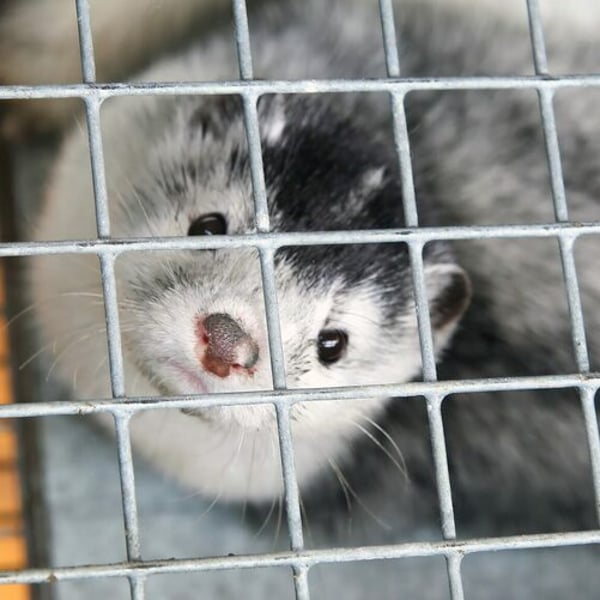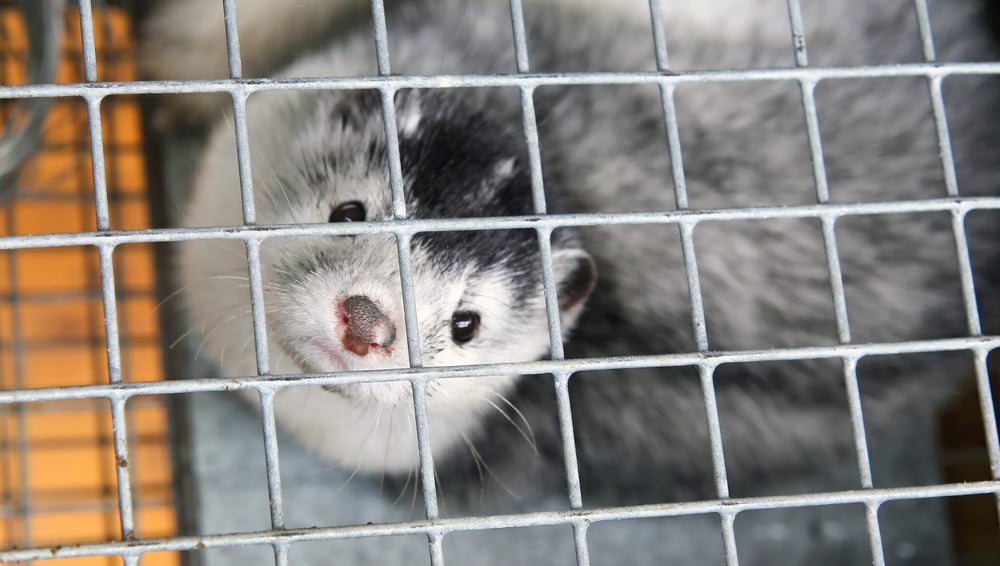Translated by
Roberta HERRERA
Published
October 23, 2024
Romania is set to become the 22nd European country to ban mink and chinchilla fur farming by 2027. Meanwhile, in the UK, some lawmakers are pushing for a ban on fur imports.
The Romanian parliament voted on October 22 to prohibit fur farming, a sector that has significantly dwindled in recent years. Once a thriving industry, Romania had over 150 fur farms in 2013, but today only around a dozen remain. Two major players in the country reportedly produce 100,000 mink pelts and 15,000 chinchilla pelts annually, according to NGOs.
This decision follows controversy sparked by undercover footage from animal rights activists, revealing the conditions in which fur animals were kept. A survey indicated that 67% of Romanians supported banning fur farms.
“This decision marks a crucial step in Europe’s broader efforts to end one of the most inhumane forms of animal exploitation,” said Rudd Tombrock, executive director of Humane Society international/Europe. “As public awareness about animal welfare grows across Europe, it’s clear that fur farming has no place in a compassionate and ethical society. The only way forward is a continent-wide ban on fur production within the European Union.”
The list of European countries banning or restricting fur farming continues to grow. After France in 2021, Italy and Ireland in 2022, Slovakia and Norway will follow in 2025, Estonia in 2026, Lithuania in 2027, and Bosnia-Herzegovina in 2028. While Germany and Switzerland haven’t implemented outright bans, they’ve introduced strict standards that have led to the closure of remaining fur farms.
The UK, which implemented a fur farming ban in 2013, has recently introduced new legislative efforts to further limit the trade. Lawmakers are proposing a ban on imports of fur from fox, raccoon dog, mink, chinchilla, coyote, and other animals. Between 2019 and 2023, the UK reportedly imported fur from an estimated 7 million animals.
Globally, the fur industry generates $40 billion (€37 billion) annually and involves around 70 million animals. China is the largest producer, accounting for 80% of global fur output, particularly mink. Europe’s remaining fur producers include Poland and Finland, where public opposition to the industry is rising, leading to a decline in production.
Copyright © 2024 FashionNetwork.com All rights reserved.

